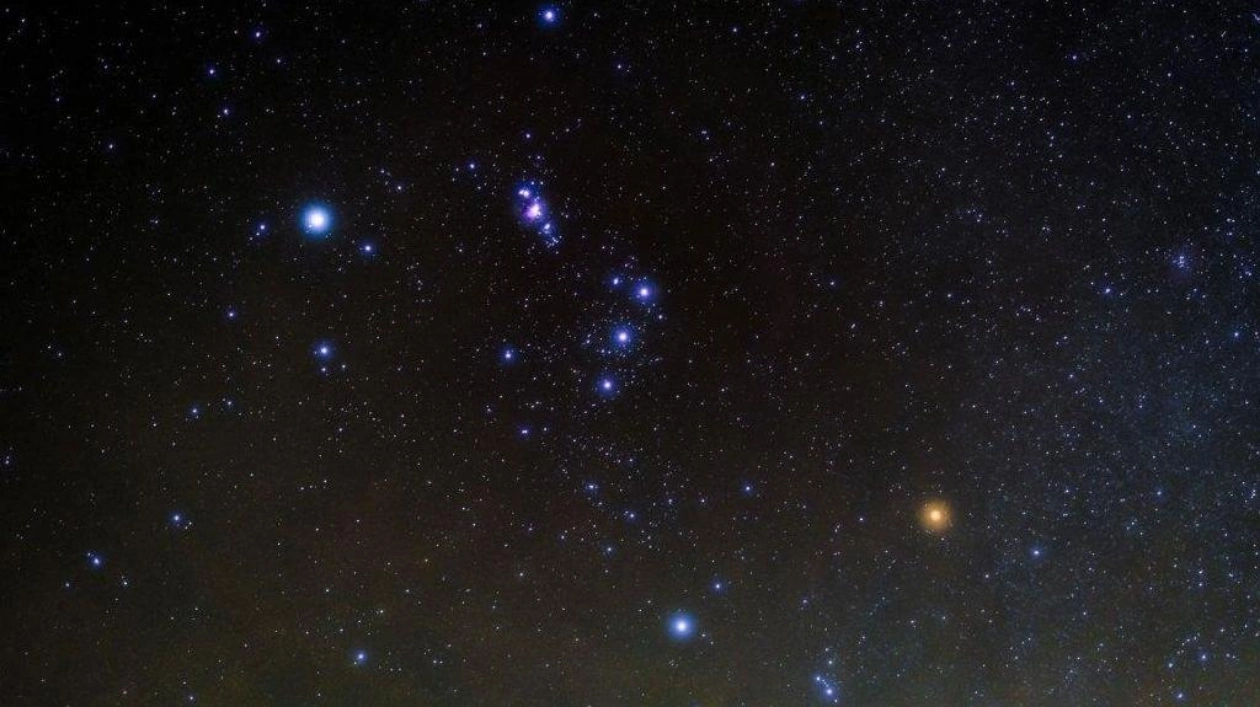Betelgeuse, Betelgeuse! The red supergiant that marks Orion’s left shoulder may have a tiny, unseen companion. Two independent studies have uncovered evidence of a star with a mass similar to the sun, orbiting Betelgeuse approximately once every 2,100 days.
“It was quite surprising,” remarks astrophysicist Morgan MacLeod from the Harvard & Smithsonian Center for Astrophysics in Cambridge, Mass. If confirmed, this star “is kind of hidden right there in plain sight.” MacLeod and his team linked a six-year cycle of Betelgeuse’s brightening and dimming to a companion star influencing its orbit, as detailed in a paper submitted to arXiv.org on September 17. MacLeod analyzed global, historical measurements dating back to 1896.
Separately, Jared Goldberg of the Flatiron Institute in New York and his colleagues utilized the last two decades of measurements of Betelgeuse’s motion on the sky, which boast the highest precision. This team also found evidence of a companion star subtly affecting the larger star, with their findings submitted to arXiv.org on August 17.
Previous observers had noted Betelgeuse’s light varying on a roughly six-year cycle. In 1908, English astronomer Henry Cozier Plummer hypothesized that this cycle could be due to the gravitational pull of a companion star tugging at Betelgeuse. Over the century that followed, astronomers discovered that Betelgeuse has a lot more complexity (SN: 8/15/22). Its outer atmosphere behaves like boiling water, it pulsates in and out on a 400-day cycle, and it occasionally ejects large bursts of material into space (SN: 6/16/21). With these complexities, the idea of a companion star fell out of favor.
However, renewed interest in Betelgeuse following its “Great Dimming” in 2019 prompted astronomers to revisit the idea. MacLeod’s team reasoned that if the six-year cycle was indeed caused by a companion, it should repeat consistently over centuries. Analyzing 128 years of observations, the team confirmed the brightness cycle is real and reliable.
Combining this result with other measurements, they deduced that the companion star is about 0.6 times the mass of the sun and orbits every 2,110 days at a distance slightly more than twice Betelgeuse’s radius. Goldberg’s data suggest a star that orbits every 2,170 days and has a mass about 1.2 times the sun’s.
“These are very exciting findings: we all want to discover Betelgeuse’s companion,” says Miguel Montargès of the Paris Observatory. “This could significantly impact our understanding of red supergiants. However, it will be very challenging, if not impossible, to test.” Even if it exists, Betelgeuse’s companion is ultimately doomed. The star’s orbit is shrinking as Betelgeuse steals its angular momentum. In about 10,000 years, Betelgeuse will completely engulf it.






